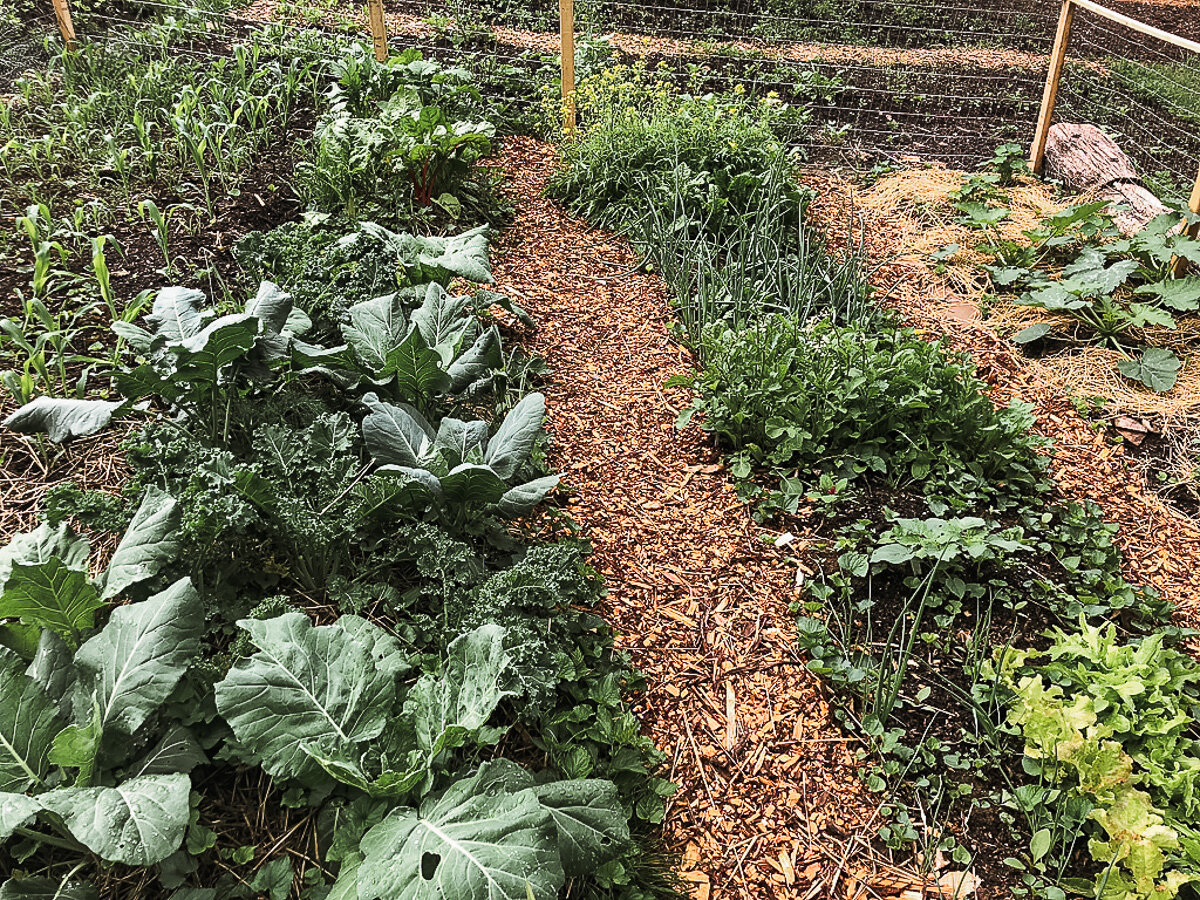The regenerative urban garden I: No-till gardening
I am an advocate of regenerative farming. But I’m not a farmer myself. The piece of land I steward is 1/3 acre — still sizable for an urban lot, but laughably minuscule compared to what Real Farmers are working with.
Yet, when I landed here last year and set out to establish our gardens, I decided I'd try my best to apply the same principles that regenerative farmers use when working the land. The benefits of regenerative farming practices add up to something pretty phenomenal: improved soil health, improved ecosystem health, better water retention, less erosion, more carbon sequestered in the soil... and more nutrient-dense food as a result.
Why would I not want all those benefits in my own garden, too? What would regenerative gardening, or carbon gardening, look like?
This post series is my attempt to answer that question. (Mind you, this is only our second year of gardening on this land, so no doubt I have a lot yet to learn and some steep learning curves to climb.)
Regenerative growing practices on the urban backyard scale
Here's my back-of-the-napkin, off-the-cuff summary of key regenerative land management principles:
Disturb the soil as little as possible.
Always keep the soil covered.
Always keep a living root in the soil.
Plant more perennial crops.
Diversity, diversity, diversity!
Incorporate animals into the system, and have a system in place for rotating them through landscape.
Now, all of these can absolutely be applied even on the urban or suburban garden scale. Soil is soil is soil. There's nothing inherent about them that says you can only do them if you have 200 acres to manage.
Let's start with the first one. The way to disturb the soil as little as possible translates to:
No-till (or no-dig) gardening
No-till gardening is exactly what it sounds like: you farm, or garden without ever tilling the soil. Tilling and plowing are almost synonymous with land cultivation, aren't they? Yet they actually destroy soil structure, create compaction, and kill the very soil biology that's the basis of fertility, like fungal networks and all those earthworms that make the soil nice and squishy.
But if you don't till, how, then, do you break up and loosen the soil? How else do you kill all the weeds? How else do you build fertility?
In a no-till garden, these goals are achieved in a couple of simple ways:
1. Aerate using a broadfork.
This is a fun annual spring ritual. The broadfork allows you to gently fluff up the soil and improve its structure without turning it over completely. It's a garden chore my daughter loves doing with me — we rock back and forth, she can't stop laughing, I get good exercise.
2. After broadforking, layer on a "lasagna mulch" to suppress weeds and build fertility.
In other words, you layer on different types of organic material, one of which is a weed block layer like cardboard or newspaper. On garden beds, I like using a few layers of wet newspaper because it breaks down faster.
There are many variations to lasagna or sheet mulching. Mine usually ends up looking something like this, from bottom layer to top layer:
bottom: slashed vegetation (any weeds or cover crops on soil surface)
any soil amendments
thin layer of composted manure
newspaper or cardboard
2 inches of compost
top layer: seedless mulch, like straw, leaves, lawn clippings, or cut-down cover crops
All these layers gradually break down, and the compost or manure invites lots of juicy earthworms that aerate the beds and gradually pull the organic materials deep into the soil.
The mulch shades the soil, blocks weeds, and creates fantastic habitat for soil micro-organisms, which are your partners in building good soil.
You can literally see yesterday's news turning into good garden soil! Now there's something to meditate on while gardening.
Once all the beds are established in this way, you can simply plant seeds into the newly formed, weed-free bed. Or, in case of transplants, break a little opening into the wetted newspaper layer and transplant directly into that hole. You now have an effective advantage over the weeds: by the time they break through the mulch, the plants you want are already well-established.
My favorite video resources for no-till gardening:
How to make a No-Dig Garden with Morag Gamble
Anything by Charles Dowding, but especially this and this





